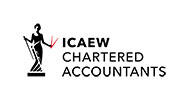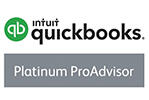Furlough scheme: has employers’ NI been overclaimed?
The Institute of Chartered Accountants in England and Wales (ICAEW) has issued new guidance that describes two scenarios where employers using the furlough scheme may have inadvertently reclaimed secondary Class 1 NI twice when the scheme was first introduced. What’s the full story?

The Coronavirus Job Retention Scheme (CJRS) is complex, but broadly employers pay a percentage of an employee's regular salary (at least 80% in 2020), subject to a cap, then reclaim the 80% element from HMRC. However, it also allows secondary Class 2 NI contributions to be reclaimed, as well as pension contributions under auto-enrolment. This has led to some scenarios where employers who claim the employment allowance (EA) of up to £4,000 per year inadvertently receiving furlough payments in respect of NI that is also relieved under the EA. The ICAEW has published detailed commentary on where this may have happened. In brief, an overclaim may occur where:
- EA claims were deferred until after the final claim month for the CJRS where the £4,000 was not absorbed in full during 2020/21; or
- EA claims were made at the beginning of the tax year where the full £4,000 was absorbed before July 2020.
Potentially affected business should carefully read the guidance and contact HMRC’s Employer Helpline on 0300 200 3200 if they think there is an issue.
Related Topics
-
HMRC checks directors’ loans are paid up
HMRC is writing to agents to check corporation tax returns for previous years are correct as it used to be possible to add a future date for an anticipated loan repayment. What’s the issue and what should you do if your advisor receives a letter?
-
Working from home tax relief scrapped in Budget
Employees who are required to work from home are currently able to claim tax relief at a flat rate of £6 per week. That's changing from 6 April 2026. What's the full story?
-
Government quietly confirms change to key tax deduction
The headlines for individuals at last week's Budget were all about the income tax hikes. But the small print contained confirmation of another important change. What’s the full story?



 This website uses both its own and third-party cookies to analyze our services and navigation on our website in order to improve its contents (analytical purposes: measure visits and sources of web traffic). The legal basis is the consent of the user, except in the case of basic cookies, which are essential to navigate this website.
This website uses both its own and third-party cookies to analyze our services and navigation on our website in order to improve its contents (analytical purposes: measure visits and sources of web traffic). The legal basis is the consent of the user, except in the case of basic cookies, which are essential to navigate this website.